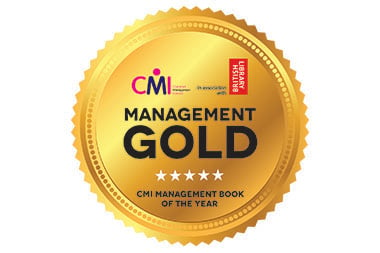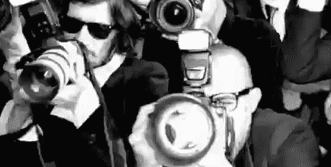MBOTY 2019: Why all managers need an attention 'vault' – and how to create one

Is this the answer to increasing your focus?
Guest blogger Curt Steinhorst
Today, we go to gyms because our jobs leave us stationary. Unfortunately, in today’s day and age, we seem to have no equivalent for our attention health. No place to burn the fat of distraction, exercise our imaginations, and build up muscle memory for focused attention.
A gym for your mind
But each of us can have a focus gym. It’s your vault, and it helps preserve attention and keep unwanted distractions – human and digital – away from you. A component of my work involves helping often resistant leaders create vaults for themselves. Then they can evangelize the concept for their employees.
What does a vault look like?
It’s an unreachable place where you go for defined periods to focus on your most important tasks. The location can be anywhere from a home office to even a cubicle. Here are some tips to help you and your people create a vault in any environment.
How to create a vault
1. Keep the door closed
An effective vault separates you from everyone else. Save your open-door policy for non-vault time. Your employees will live.
If you have a cubicle or open-office desk, try to adopt a conference room as your vault. If real walls aren’t available, build virtual ones.
2. Invest in noise-canceling headphones
When settling in on a plane, I’ll chat with my seatmate. Then comes the international signal that I’m busy: “It was nice meeting you,” I’ll say, before opening my laptop and slipping on noise-canceling headphones. My virtual door stays shut, and I get heaps of work done.
If you don’t have a door to close or your walls are thin, headphones are a great help. Not only do they block out noise, but they also tell others, “I’m blocking out noise for a reason.” Headphones isolate you from the world (is it possible to be a teenager without them?).
But there are two important caveats for you and your people.
Set Ground Rules. Corporate leaders often complain to me about the sight of headphones on their young employees. But their real irritation is reserved for workers who wear them all day. As leaders, we need to train our people to use headphones for specific periods of focus, then otherwise put them away. If headphones are a default, they lose their value.
You should also establish a policy for how and when people can interrupt each other during headphone use. Is a shoulder tap okay, or would an IM be better? No one likes to be yanked out of the zone, but sometimes it’s necessary.
Headphones aren’t always helpful. They only help if they block out noise rather than adding to it. Audiobooks, podcasts, and music with words that you can’t ignore steal attention. These are not light-focus activities. Anything with words requires your active attention to process. The vault is for full-focus work. Keep the pairings to tasks that enhance your attention. Headphones are most effective when they play white noise, instrumental music, or nothing.
3. Hang up a ‘Do Not Disturb’ sign
Make sure every member of your team has a clear sign to hang where others can’t miss it. And there’s no rule against creativity: ‘Do not disturb: Really. I need an hour’; ‘please e-mail or leave me a voicemail’; ‘pretty sure I have a flesh-eating virus’ or ‘wrong door!’
Hang it on your door, across the opening to your cubicle, or tape it to the back of your chair. Unnecessary interruptions will cease.
In fact, I was asked about do not disturb signs so many times that I finally had a designer create one: Do not disturb – in my vault. I’ve had several clients buy these signs for everyone in their company.
4. Disconnect
A closed door and Do Not Disturb sign aren’t always enough. Sometimes the person most likely to distract you is you.
Turn off your Wi-Fi and phone service. (If you need a connection for work, simply switch off everything that can interrupt you.) You can go an hour or two without e-mails, texts, and social media. In fact, you’ll work with more efficiency and with less stress. A University of California at Irvine study reveals that without e-mail, people multitask less and focus longer (big surprise). Stress, measured by heart rate variability, was lower too.
If those options aren’t working for you, invest in an application that forces you to shut off the world. I use one that requires me to totally reboot my computer if I want to get back online.
If a laptop is necessary in your vault, try limiting yourself to the screen in which you’re working. A full-screen view will keep your eyes from wandering. It’s a small sacrifice for focus and exponentially increased productivity.
How to stay focused
Now it’s time to train your mind to recognise your vault as sacred and distraction-free. A vault should unequivocally say, ‘this is where I work’. Below are tips to help you and, in turn, your team.
1. The ideal vault is the same place every day
By committing to one workspace, you’ll form habits that boost your productivity and make you an asset in an attention-deprived world. If, as with me, the same spot every day leads to boredom and a loss of productivity, you can alternate among a few places. Just make sure any space you use provides complete privacy from the people who would interrupt you if they could see you – no interruptions allowed!
Just keep the deeper principle in mind: when you enter a vault, your brain needs to automatically kick into work mode. It’s not for checking e-mail, reading novels, or monitoring stocks. Your vault is the one place reserved solely for work. Simple as that.
2. Leave it when the session is done
This means getting up and walking somewhere else to check Facebook. Your vault is where you form productive habits. If you play there, your brain becomes confused.
Reward yourself when vault time is over. Get coffee, chat with an employee, or dive headlong into whatever enticement our shared matrix has to offer.
This is the time when your team can reach you again. Employees will quickly become used to your being unreachable during vault time – especially if they’re cultivating their own vault habits.
Treat yourself to some endorphins by checking off vault time from your calendar. You might also write down what you accomplished in your sanctuary.
3. If you can’t leave the vault, transform it
If you can’t physically leave your office, then undo all the things you did to make it a vault. Open your door, take off the Do Not Disturb sign, and turn your phone back on. You can transform your office or cubicle from workspace back to everything-else space.
4. Get your community to buy in
The vault works only if those who want to reach you know when and why you are not available. On the other hand, you don’t want to interrupt 30 people with an announcement that focus is too important to be interrupted.
I make sure two people always know when I’m entering my vault: my wife and my director of operations. My wife can then serve as a deflection for any personal interruptions, my ops director for all work-related ones. The rest can figure it out. This is particularly important early on when you are trying to establish a new habit; you need people working to support your habit rather than trying to break the proverbial vault code to ask you about the football game from last night.
This is an edited extract from ‘Can I Have Your Attention: Inspiring Better Work Habits, Focusing Your Team, and Getting Stuff Done in the Constantly Connected Workplace’, by Curt Steinhorst (published by Wiley) which has been shortlisted for the CMI Management Book of the Year 2019

Press & Media Enquiries
For more information or to request interviews, contact CMI's Press Team on 020 7421 2705 or email press.office@managers.org.uk


